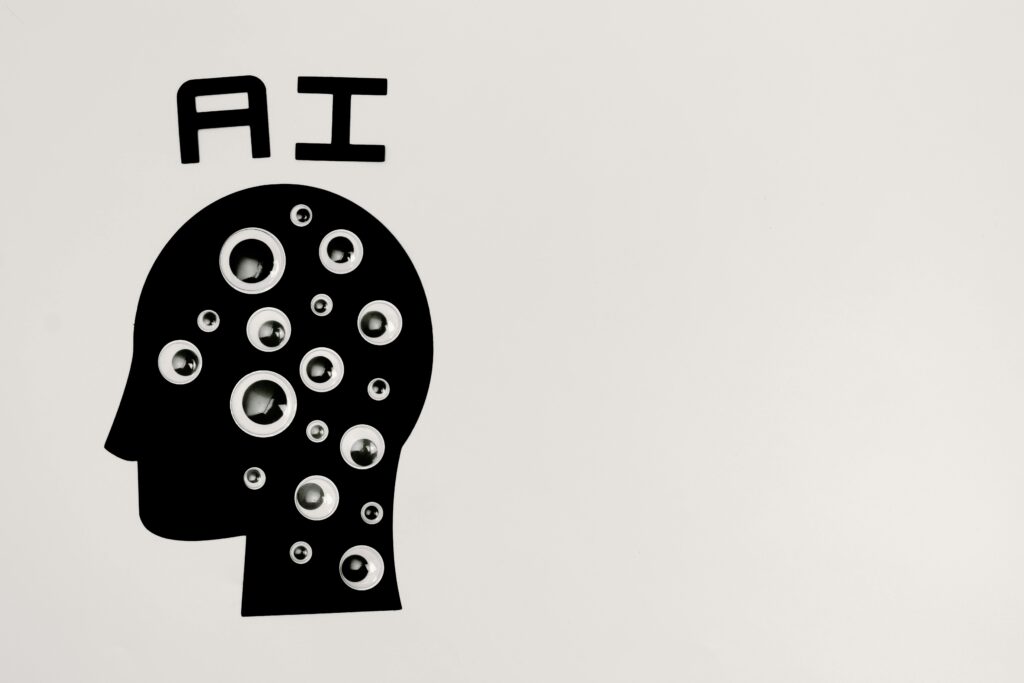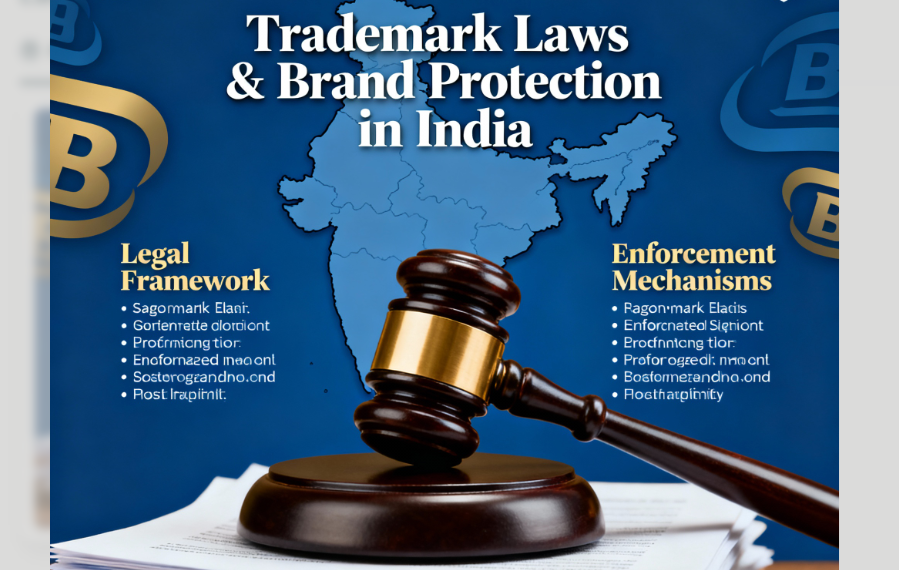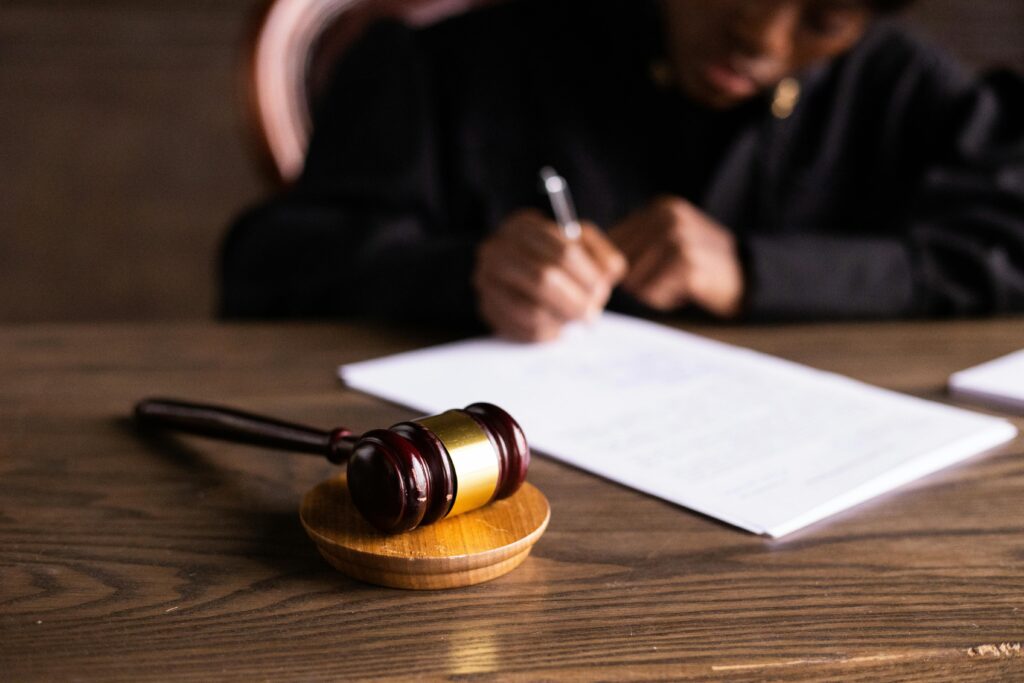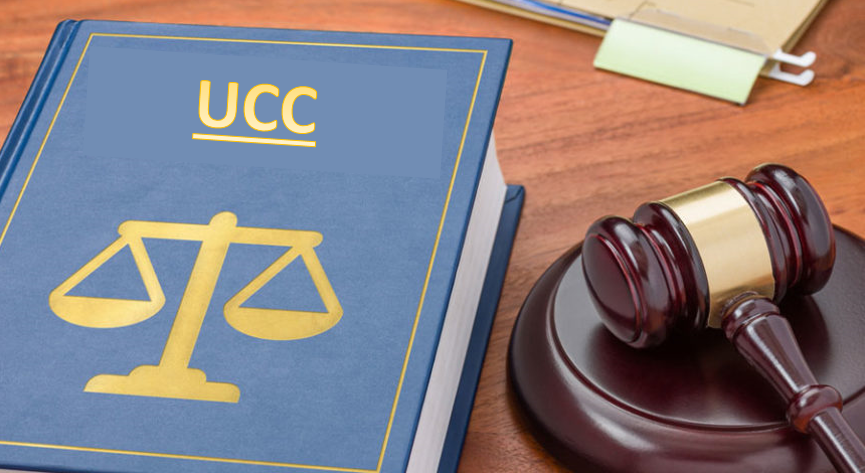Published On: September 19th 2025
Authored By: Khushi Singhal
IILM University, Gurugaon
ABSTRACT
The Indian Constitution guarantees its citizens the fundamental right to freedom of speech and expression under Article 19(1)(a), which is a cornerstone of its vibrant democracy. However, this right is not absolute and is subject to reasonable restrictions as outlined in Article 19(2), particularly concerning public order, decency, morality, and incitement to an offence. In recent times, the rise of ‘hate speech,’ especially in the digital realm, has presented significant challenges to maintaining this delicate balance.
This article critically examines the legal framework surrounding hate speech in India. It analyzes the lack of a precise definition for hate speech, the various statutory provisions used to address it, and the crucial role of judicial pronouncements in navigating the complex relationship between free expression and the necessity of preventing incitement to violence, discrimination, and social discord. The aim is to provide a clear legal perspective on how Indian democracy seeks to reconcile these often-conflicting principles and to propose a way forward for a more robust and equitable legal framework.
INTRODUCTION
Democracy thrives on the free exchange of ideas, opinions, and dissent. The freedom of speech and expression, enshrined as a fundamental right in Article 19(1)(a) of the Constitution of India, serves as the bedrock of this democratic ethos. It empowers citizens to participate in public discourse, hold their governments accountable, and contribute to the shaping of national policies. This right is not merely about individual liberty but is also essential for the collective good, fostering an informed citizenry and a robust public sphere.
Nevertheless, the freedom of speech is not unrestricted, just like any other fundamental right. The Constitution’s Article 19(2) allows for “reasonable restrictions” on this right when they are necessary to protect India’s integrity and sovereignty, the State’s security, good relations with other countries, public order, decency or morality, or in connection with contempt of court, defamation, or incitement to crime.[1] The controversial problem of “hate speech” arises within this framework of legitimate limits, posing one of the biggest threats to the social and legal foundation of Indian democracy. Hate speech, defined as any form of expression that attacks a person or group based on attributes such as ethnic origin, religion, race, disability, or sexual orientation, poses a direct threat to the principles of equality, dignity, and fraternity that are foundational to the Indian Constitution. It has the potential to incite violence, discrimination, and social disharmony, which can erode the very fabric of a pluralistic society.
The critical task for Indian jurisprudence is to meticulously calibrate the scales between protecting individual expression and preventing the proliferation of speech that actively undermines the constitutional values of peace and equality. This requires navigating a complex legal labyrinth, where the absence of a clear statutory definition of hate speech, the broadness of existing penal provisions, and the rapid evolution of digital communication exacerbate the challenge.
Constitutional Framework: The Bedrock of Rights and Restrictions
Part III, which addresses Fundamental Rights, of the Constitution lays forth the fundamental rules that regulate free speech and its restrictions in India.
- Article 19(1)(a) : The Expansive Realm of Expression
Article 19(1)(a) explicitly affirms that “All citizens shall have the right to freedom of speech and expression.” This right is comprehensive and has been interpreted by the Supreme Court to encompass not only the verbal and written expression of one’s views but also various other forms of communication, including print and electronic media, as well as non-verbal expressions such as silence. It further includes the right to disseminate and publish ideas, the freedom of the press, the right to access information, and the right to choose not to speak. The judiciary has consistently emphasized that this right is indispensable for the effective functioning of a democracy, as it enables the formation and articulation of public opinion on matters of significant societal interest.
- Article 19(2): The Constitutional Permissibility of Reasonable Restrictions
Crucially, Article 19(2) immediately follows, stipulating that “Nothing in sub-clause (a) of clause (1) shall affect the operation of any existing law, or prevent the State from making any law, in so far as such law imposes reasonable restrictions on the exercise of the right conferred by the said sub-clause in the interests of the sovereignty and integrity of India, the security of the State, friendly relations with foreign States, public order, decency or morality, or in relation to contempt of court, defamation or incitement to an offence.”
This clause functions as a critical legislative gateway for imposing limitations on free speech, acknowledging that while freedom of expression is a fundamental right, it may be subject to certain restrictions under specific circumstances. Any imposed limitations must be deemed “reasonable,” a term that has been dissected and debated through extensive judicial scrutiny to ensure a balance between individual rights and societal interests.
The Supreme Court has outlined several key tests to assess the reasonableness of a restriction on free speech :
- Proportionality : The limitation must be proportionate to the legitimate objective it seeks to achieve. This means that the severity of the restriction should correspond to the seriousness of the concern it addresses, ensuring that it is not overly broad or excessive.
- Necessity : The restriction must be essential in a democratic society. This test evaluates whether there are less restrictive alternatives available that could achieve the same goal, emphasizing the importance of maintaining democratic freedoms wherever possible.
- Legitimate Aim : The restriction must fulfill a legitimate purpose that aligns with the grounds specified in Article 19(2) of the Constitution. This includes aims such as protecting national security, public order, or the reputation and rights of others essentially, functions that serve the common good.
- Least Restrictive Means : The State is required to employ the least restrictive means necessary to achieve its objectives. This principle highlights the duty of the government to explore all possible avenues that impose minimal limitations on free speech while still addressing the identified concern.
In the context of hate speech, the pertinent grounds for imposing restrictions primarily incorporate concepts such as “public order,” “decency or morality,” and “incitement to an offense.” Each of these terms poses its own interpretative challenges that require careful judicial consideration to ensure that the action taken effectively curbs harmful speech while not unduly infringing upon genuine expressions of opinion or dissent. Navigating this landscape is complex, as it demands a nuanced approach that carefully weighs the need to protect individuals and society from harm against the fundamental principle of free expression, ensuring that any limitations prescribed protect rather than undermine the basic tenet of democratic engagement.
Defining Hate Speech in India: A Legal Conundrum
One of the most significant challenges in regulating hate speech in India is the absence of a clear, comprehensive, and universally accepted legal definition. Unlike some other jurisdictions that have specific statutes defining hate speech, Indian law relies on a patchwork of provisions within various existing legislations. This lack[2] of a precise definition often leads to ambiguity, inconsistent application, and potential for misuse. Currently, hate speech is understood primarily through its manifestations and the effects it produces, as prohibited by specific sections of the Indian Penal Code (IPC) and other laws. These provisions target speech that promotes enmity, insults religious beliefs, or incites violence. However, they do not offer a standalone definition of what constitutes ‘hate speech’ itself.
The Law Commission of India, in its 267th Report (2017), recognized[3] a gap in the current legal framework regarding hate speech and proposed the addition of new sections to the Indian Penal Code (IPC) to clearly define and penalize it. The Commission suggested that hate speech be defined as “any word spoken or written, or any sign or visible representation that is intended to cause fear, alarm, or incitement to violence,” or “which is intended to insult the religious beliefs of any class of persons.” While these recommendations underscore the need for a more precise framework, they have not yet been enacted into law.
The lack of a clear definition often forces courts to interpret the intent and impact of speech on a case-by-case basis, leading to inconsistent outcomes. This inconsistency makes it difficult for individuals to understand the exact limits of permissible expression. Moreover, this ambiguity can result in a chilling effect, where individuals self-censor out of fear of legal consequences, even when their speech constitutes legitimate criticism or dissent.
Statutory Provisions Addressing Hate Speech
Despite the absence of a unified definition, several statutory provisions in India are utilized to curb speech deemed hateful or inciting, primarily by focusing on its potential impact on public order and social harmony.
● Indian Penal Code, 1860 (IPC)
The IPC constitutes the foundation of India’s criminal law system, and several sections specifically address hate speech:
- Section 153A: Promoting Enmity between Different Groups : This frequently invoked provision criminalizes actions, words (both spoken and written), signs, or visible representations that:
- Promote or attempt to promote feelings of disharmony, enmity, hatred, or ill will between different groups based on religion, race, place of birth, residence, language, caste, or community.
- Commit any act that is prejudicial to the maintenance of harmony and is likely to disturb public tranquility.
A key element of this section is the intention to incite such disharmony or hatred, or the likelihood of such an outcome occurring.
- Section 153B: Imputations, assertions prejudicial to national integration.
This section targets statements or assertions that:
- Impute or assert that any class of persons cannot, by reason of their identity, bear true faith and allegiance to the Constitution or uphold national sovereignty.
- Assert, counsel, or propagate that any class of citizens shall be denied or deprived of their rights as citizens.
- Section 295A : Deliberate and malicious acts intended to outrage religious feelings. This provision penalizes acts that are deliberate and malicious and intended to outrage the religious feelings of any class of citizens by insulting or attempting to insult their religion or religious beliefs. The emphasis is on deliberate and malicious intent and the tendency to disrupt public order.
- Section 505 : Statements Leading to Public Mischief.
This section addresses statements, rumors, or reports that could cause fear or alarm among the public, or that might incite one group or community to commit an offense against another. Sub-clause (2) specifically targets statements that create or promote enmity, hatred, or ill-will between different groups.
● Information Technology Act, 2000 (IT Act)
While the controversial Section 66A of the IT Act was struck down by the Supreme Court in Shreya Singhal v. Union of India (2015), other provisions of the IT Act and related rules (like the IT (Intermediary Guidelines and Digital Media Ethics Code) Rules, 2021) place obligations on online intermediaries to exercise due diligence and remove content deemed unlawful, including hate speech, upon receiving knowledge of it.
Landmark Judicial Pronouncements : Shaping the Contours
The Indian judiciary, particularly the Supreme Court, has played a crucial role in interpreting the constitutional right to freedom of speech and the reasonable restrictions imposed on it, thereby shaping the legal understanding of hate speech.
- Romesh Thappar v. State of Madras (1950): This was one of the earliest cases where the Supreme Court emphasized the importance of freedom of the press and held that “public order” in Article 19(2) referred to grave forms of public disorder, not mere disturbances. This case highlighted the Court’s initial inclination towards a narrow interpretation of restrictions.[4]
- Ramji Lal Modi v. State of UP (1957) : This case specifically dealt with the constitutionality of Section 295A IPC. The Supreme Court upheld its validity, stating that the law only punishes “aggravated form of insult to religion” which is perpetrated with “deliberate and malicious intention” and “has a tendency to disrupt public order.” This judgment established the ‘deliberate and malicious intent’ and ‘tendency to disrupt public order’ as key criteria for invoking Section 295A.[5]
- Kedar Nath Singh v. State of Bihar (1962)[6] : While primarily dealing with sedition (Section 124A IPC), this landmark judgment is crucial for understanding speech restrictions. The Court upheld the constitutionality of Section 124A but significantly narrowed its scope, holding that speech could only be penalized if it had an “incitement to violence” or “tendency to create public disorder” as its proximate cause. This ‘incitement to violence’ test has become a guiding principle for interpreting other speech-related offences, including those related to hate speech.
- Shreya Singhal v. Union of India (2015)[7] was a significant moment for free speech in India. The Supreme Court declared Section 66A of the IT Act, 2000, which criminalized “offensive messages,” unconstitutional due to its vagueness and overbreadth. The Court made a clear distinction between “discussion, advocacy, and incitement,” stating that only speech that incites violence or causes public disorder can be restricted. It reiterated the ‘proximate nexus’ test, emphasizing that any restriction must have a direct and immediate relationship with public order. This judgment highlighted the necessity for clearly defined restrictions to prevent the chilling of legitimate speech.
- Amish Devgan v. Union of India (2020) :This case involved a journalist accused of hate speech during a TV debate. The Supreme Court clarified the definition of hate speech, stating that it is distinct from merely offensive speech, as it requires intent to incite hatred or violence. The Court identified key factors for assessing hate speech, including the context, the speaker’s status, the target audience, the speech content, and its impact. This ruling established a clearer framework for evaluating hate speech claims.
Recent Observations by the Supreme Court
In recent years, the Supreme Court has expressed growing concern over the rise of hate speech, particularly on social media. The Court has frequently urged the government to take stricter action and has even considered issuing guidelines in the absence of a specific law. These observations highlight the judiciary’s ongoing struggle to balance the principle of free speech with the need to maintain social harmony and prevent incitement to violence.
Through these pronouncements, the Indian judiciary consistently seeks to uphold the importance of free speech while recognizing the necessity of restrictions on speech that incites violence, hatred, or public disorder. The tests for ‘incitement to violence’ and the requirement for ‘deliberate and malicious intent’ have become critical safeguards against arbitrary restrictions.
The Balancing Act : Challenges and Dilemmas
- Subjectivity and Intent : Determining the ‘intent’ of the speaker and the ‘likelihood’ of their speech causing public disorder or enmity is inherently subjective and challenging. What one person perceives as hateful, another might view as legitimate criticism or even humor. This subjectivity often leads to inconsistent application of laws and can be influenced by political or social pressures. The line between strong political rhetoric, satire, and genuine incitement is often blurred.
- Political Discourse and Inflammatory Rhetoric : In a lively democracy like India, political discussions often involve strong criticism and debate. However, during election campaigns, these discussions can turn into inflammatory rhetoric. Politicians may use divisive language to win support from specific groups. It can be hard to tell the difference between acceptable political speech and hate speech, especially when powerful leaders are involved.
-
Online Hate Speech: A Digital Deluge : The advent of the internet and social media has exponentially amplified the challenge of regulating hate speech.
-
Rapid Dissemination: Hateful content can go viral globally within minutes, making it difficult for law enforcement to react swiftly.
-
Anonymity: The relative anonymity offered by the internet makes it harder to identify and prosecute perpetrators.
-
Jurisdictional Issues: Hate speech originating from one country can have a harmful impact in another, raising complex jurisdictional questions.
-
Scale: The sheer volume of content generated daily makes manual moderation impossible.
-
Role of Social Media Intermediaries : Social media platforms are increasingly recognized as both facilitators and potential mitigators of hate speech. Legal frameworks aim to hold these intermediaries accountable for removing unlawful content. However, implementing this responsibility effectively is challenging due to the vast amount of content, the complexities of interpreting local laws across different jurisdictions, and the risk of over-censorship, which could suppress legitimate dissent. The debate surrounding their liability and the extent of their responsibility remains ongoing.
Way Forward
To achieve a more robust and equitable legal balance between freedom of speech and hate speech in India, several strategic steps are imperative:
- Comprehensive Legal Definition : The most critical step is to enact a comprehensive and precise legal definition of ‘hate speech’ through legislative reform. This definition should be specific enough to target genuinely harmful expressions while avoiding overbreadth that could stifle legitimate criticism, dissent, or artistic expression. It should incorporate international best practices while being tailored to India’s unique socio-cultural context. The recommendations of the Law Commission of India’s 267th Report provide a valuable starting point.
- Regulation of Online Content and Intermediary Responsibility : Develop a more effective and transparent regulatory framework for online hate speech, involving collaboration with social media platforms. This could include clear guidelines for content moderation, robust grievance redressal mechanisms, and proportionate penalties for non-compliance, while ensuring that platforms do not become arbitrary censors of legitimate speech. Exploring technological solutions like AI-based content filtering, combined with human oversight, can aid in identifying and removing hateful content efficiently.
Conclusion
The balance between freedom of speech and the prohibition of hate speech in Indian democracy is a dynamic and perpetually challenging endeavor. While Article 19(1)(a) stands as a robust guardian of expressive liberties, Article 19(2) provides the necessary constitutional space for reasonable restrictions to safeguard public order, social harmony, and the dignity of all citizens. The Indian judiciary has consistently upheld the primacy of free speech, emphasizing that restrictions must be narrowly tailored and demonstrate a direct nexus to incitement or public disorder, as articulated in landmark judgments like Kedar Nath Singh and Shreya Singhal.
However, the legal framework governing hate speech in India remains fragmented and largely reactive, relying on a mosaic of provisions within the IPC and other statutes rather than a comprehensive, standalone law. This absence of a clear and precise definition of hate speech often leads to ambiguity, inconsistent application, and the potential for misuse, creating a chilling effect on legitimate dissent while sometimes failing to adequately address the insidious forms of hateful expression. The proliferation of online hate speech has further exacerbated these challenges, presenting new complexities related to rapid dissemination, anonymity, and jurisdictional issues.
Ultimately, the Indian legal system strives to navigate this complex terrain by upholding the democratic ideal of free expression while simultaneously recognizing the imperative to protect vulnerable groups from the corrosive effects of hate speech that incites violence, discrimination, or social disharmony. This balancing act is not merely a legal exercise but a continuous societal negotiation, reflecting the evolving values and challenges of a diverse and pluralistic nation.
References
[1] https://www.scobserver.in/journal/has-the-supreme-court-done-enough-to-protect-press-freedom/
[2] https://legal.economictimes.indiatimes.com/news/industry/absence-of-specific-law-on-hate-speech-using-ipc-rp-act-mcc-to-control-it-ec-to-sc/94217977
[3] https://projects.itforchange.net/online-violence-gender-and-law-guide/module-2-typologies-of-online-gender-based-offenses-in-law/2-6-gender-based-hate-speech/#:~:text=Recognizing%20this%2C%20the%20Law%20Commission,and%20sexual%20orientation%2C%20among%20others.&text=Law%20Commission%20of%20India.,Hate%20Speech.
[4] https://www.alec.co.in/judgement-page/romesh-thappar-v-state-of-madras-1950-sc-124#:~:text=The%20Supreme%20Court%20of%20India,of%20Public%20Order%20Act%2C%201949.
[5] Ramji Lal Modi v. State of UP, AIR 1957 SC 620
[6] Kedar Nath Singh v. State of Bihar, AIR 1962 SC 955
[7] Shreya Singhal v. Union of India, (2015) 5 SCC 1




